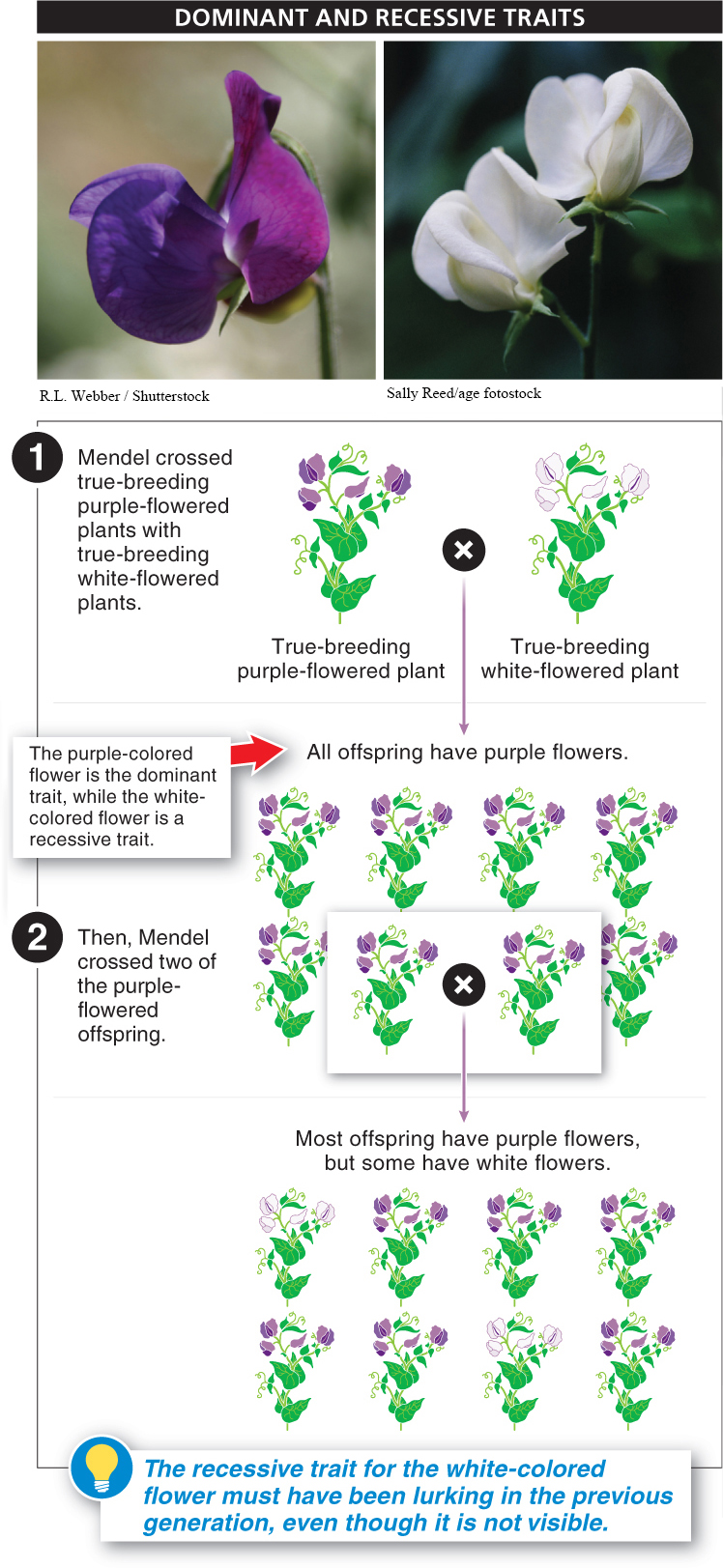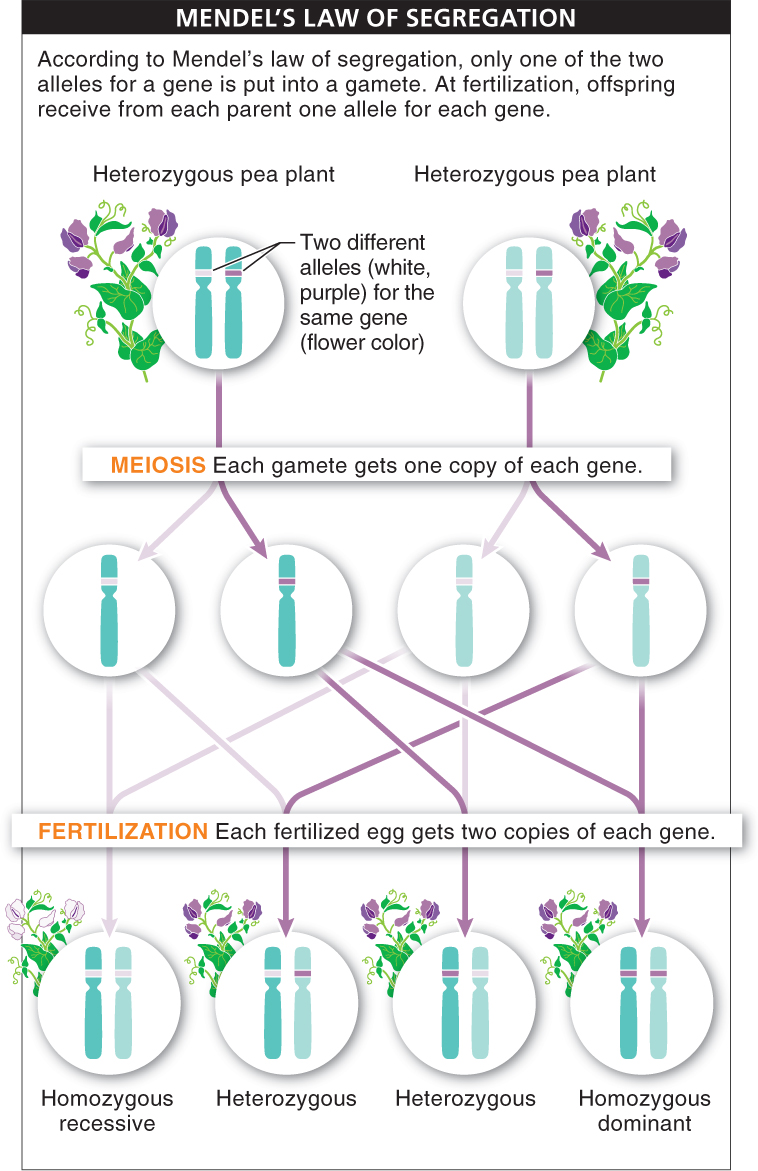7.4: Segregation: you’ve got two copies of each gene but put only one copy in each sperm or egg.
One odd and recurring result spurred Mendel to figure out the mechanism by which traits could be passed from parent to offspring. Just as brown-
How was it possible to produce white flowers from a purple cross? Where did the whiteness come from? Here’s where Mendel’s meticulous and methodical experiments paid off. Let’s follow his process. First, he started with some true-

All of the offspring from these crosses were purple, every time. For this reason, Mendel called the purple-
Things got a bit more interesting when Mendel took the purple-
Mendel devised a simple hypothesis to explain this pattern of inheritance. It incorporated three ideas that helped him (and now help us) make predictions about crosses (FIGURE 7-10).

285
- 1. Rather than passing on the trait itself, each parent puts into every sperm or egg it makes a single set of instructions for building the trait. Today, we call that instruction set a gene.
- 2. Offspring receive two copies of the instructions for any trait. Often, both sets of instructions are identical, and the offspring produce the traits according to those instructions. Other times, though, each parent contributes a slightly different set of instructions—
that is, a different allele— for that trait. So, for example, pea plants have two alleles for flower color: a purple- flower allele and a white- flower allele. Each is a different allele, but because both specify instructions for producing color in flowers, they are both genes for flower color. Same gene (flower- color gene), different alleles (purple and white). - 3. The trait observed in an individual depends on the two copies of the gene it inherits from its parents. When an individual inherits the same two alleles for this gene, the individual’s genotype for that gene is said to be homozygous and the individual shows the trait specified by the instructions embodied in those alleles. When an individual inherits a different allele from each parent, the individual’s genotype for that gene is said to be heterozygous. Dominant and recessive alleles are defined by their action when they are in the heterozygous state: if there is a phenotypic effect of one of the alleles but not the other allele, the first is called the dominant allele and is said to “mask” the effect of the other allele, which is called the recessive allele. Note that this is the sole defining feature. “Dominant” does not mean that an allele is advantageous or more common than a recessive allele.
“There were no questions.”
—Entry in meeting notes following Mendel’s first public presentation of his ideas on how heredity works. (Tragically, no one in the audience of scientists had any idea what he was talking about. Not until about 40 years later did the world understand his discoveries.)
When an individual reproduces, it contributes just one of its two copies of a gene to its offspring. The other parent will contribute the other allele. So, when sperm and eggs are made, each sex cell gets only one copy of a gene—
TAKE-HOME MESSAGE 7.4
Each parent puts a single set of instructions for building a particular trait into every sperm or egg he or she makes. This instruction set is called a gene. The trait observed in an individual depends on the two copies (alleles) of the gene it inherits from its parents.
How did Gregor Mendel explain that some purple-
286